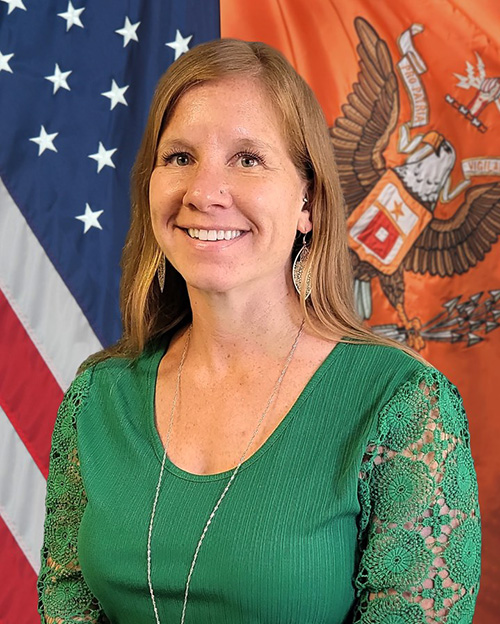Getting to the Heart of the Harding Project
By Laura M. Levering
Article published on: September 1, 2024 in the Army Communicator Fall/Winter 2024 Edition
Read Time: < 3 mins

Laura M. Levering Editor, U.S. Army Signal School
Greetings and Happy New Year!
Reflecting on where I was at this time last year, planning for significant changes to how we view and publish
the Army Communicator, I could not have predicted just how much it would evolve.
It has been one full year since the Army Communicator changed from being published monthly to being published
quarterly. Or in this year’s case, I believe for its first time in history, the Army Communicator was published
three (not four) times. Hurricane Helene. Where do I begin? I will sum it up by saying that I am truly grateful
for everyone’s flexibility and understanding through what became a time in many of our lives’ that few (if any)
of us were truly prepared for. To say the hurricane created challenges none of us will soon forget is an
understatement.
Onto the Harding Project …
When the Harding Project was announced back in September 2023, I had no idea how it would shape the Army
Communicator moving forward. It wasn’t until Spring of 2024, when I connected with the team at Army University Press (AUP) and fellow military journal editors, did I begin to grasp
the Harding Project. A couple months later, during a workshop hosted by AUP, I began to gain an understanding of
what the Harding Project entailed. And it’s a lot – so much that it was recognized that no one individual can
(or should) manage a military journal on their own. If you haven’t already, you will soon hear about Harding
Fellows. The Army Communicator has one now, but this person is multi-hatted and can only focus a limited amount
of effort on our publication. But what he has brought to the table has already been a tremendous help. If you
are a Signaleer who has submitted an article in the past few months, there’s a good chance that Capt. Vincent
Kirk has reviewed it and provided feedback on ways to improve the article. As the Army Communicator’s Harding
Fellow, one of Kirk’s many duties is to do just that – provide feedback that will help turn your work into
something publish-worthy — not only in the Army Communicator, but also on the Line
of Departure (LD), which is another facet of the Harding Project.
When submitting articles for the Army Communicator, it is imperative that you follow submission guidelines. As
the emphasis on professional military writing/discourse grows, we anticipate the number of submissions will grow
with it. Please understand that not everything that is written is intended for the Army Communicator. In
following the trend and advice of other military journals, we will not be publishing white papers (few
exceptions may be made). As we look to the future and strive to create the best possible version of the Army
Communicator, with the added opportunity of being published on the LD, consider
the following points when writing an article:
- Is it written like an article intended for a branch journal? Or is it an academic essay that was written for
class?
- Is the article actionable, innovative and engaging? Does it add value to the Army’s body of knowledge?
- How well does it align with Chief of Staff of the Army Gen. Randy George’s four focus
areas for the Army?(Four focus areas: warfighting, delivering ready combat formations,
undergoing continuous transformation,and strengthening the profession of arms)
These considerations will increase the likelihood of your article being published. In some cases, white
paperscan be transformed into a news or feature article that is suitable for military journals. If that is
something you’d like to pursue, let us know, and we will do our best to assist. As always, please reach out if
you have any questions!
Submission guidelines Articles need to be sent as a Word document with
photos and graphics sent as separate attachments. Include a description of each
photo/graphic along with the rank, full name, and unit of person who took photo (created graphic). Acronyms
need to be spelled out on first reference, with the abbreviation of the term acceptable on subsequent
reference. Between 500 and about 2,000 words per article is ideal. This helps ensure a minimum of one page
and maximum of four pages per submission (depending on accompanying photos, etc.). Spring
deadline: March 14. Spring 2025 theme: Enabling the
data-centric warfighter.